A shank is one of the worst mishits in golf caused by a the club making contact with the ball at the point where the clubhead attaches to the shaft of the club. This part of the club is the hosel. The shank is caused by the body moving towards the ball during the swing. Allowing the ball to be contacted not on the club face, but by that hosel.
Let’s discuss further what causes a golf shank shot to help you know the dos and the don’ts to avoid these embarrassing shots!
What Causes Shanks in Golf Swing Path
The classic shank happens when your club, during descent, advances towards the ball to produce heel contact. Therefore, your body loses its stability during the swing and ends up closer to the ball.
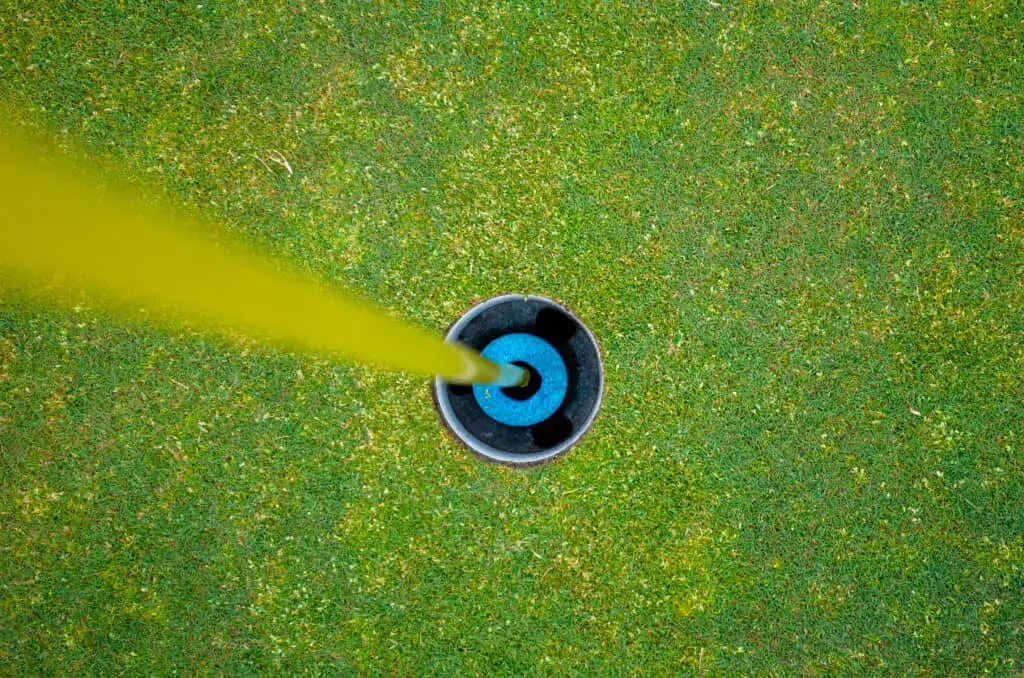
A shank occurs when you hit the ball with a hosel of the clubface, almost the club’s shaft. The worst part is that some golfers think that the reason for a shank is an open clubface, and therefore try to play with an even more closed clubface causing more shanks.
However, the good news is that you can fix this problem and avoid hitting shanks. The key lies in smooth and consistent golf swings.
Below are some of the reasons that may cause a shank in golf:
- When a golfer takes the club too far inside on the backswing going away from the ball, shanks happen. It causes an over-the-top swing path at impact, leaving many gofers to think that it is due to an open clubface. However, this is not the case.
- When a golfer puts most of their weight on their toes, it may cause them to shank the ball—putting your weight too far forward results in a loss of balance in the mid of the swing.
- Likewise, if you put all your weight on your heels while swinging, it may also result in a shank
- when a golfer stands too close to the ball in the setup;
- Standing too tall over the ball can also cause shanks
- Keeping your arms too far away from your body in the swing path can result in a shank
- In a the swing, you have to keep your head and shoulders straight. If you lean your head toward the ball, it can cause a shank.
Luckily, shanks can be fixed once and for all with some simple tips. Let’s discuss them!
How to Prevent Shanks in Golf?
Shanks scare the golfer because it can occur with any type of club if the clubhead is farther than the body upon contact with the ball. The ball is hit with the hosel instead of the head. Once the ball is touched, it will go off to the right side and possibly cost a lot of penalty points.
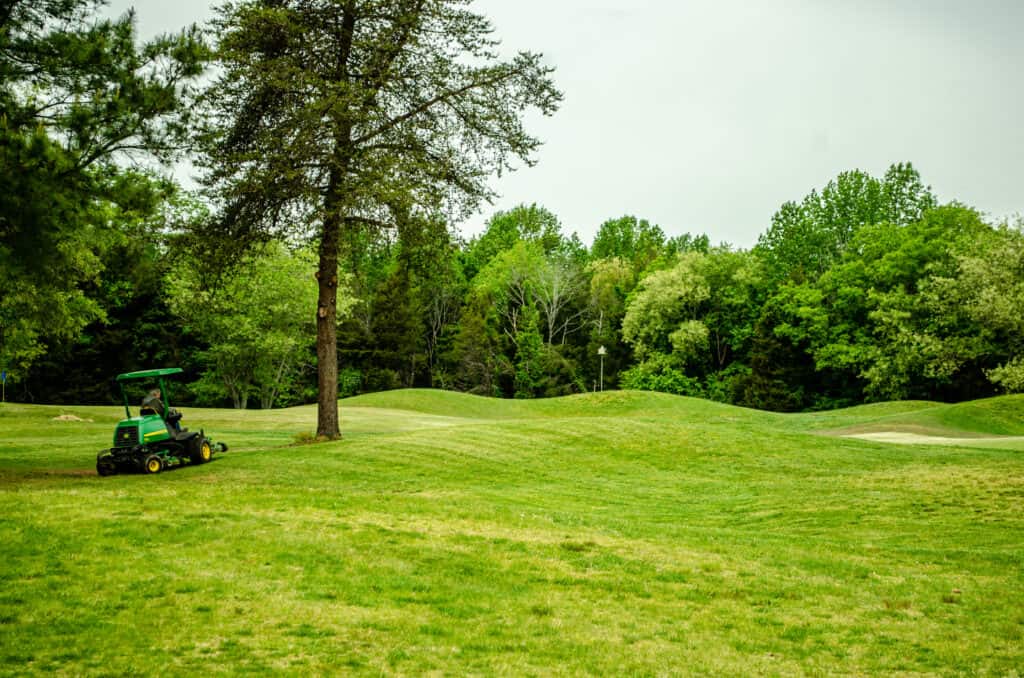
Golf Ball Positioning and Posture
Poor posture, leaning too forward to reach for the ball with the body, causing a kickback with hands too far from the body and out of the line of play can cause shanks. It can happen to anyone. Even champions can be seen hitting one to two shanks per season.
The secret to avoiding a shank is to have a good attack path on the ball inside the swing path line. Make sure to position yourself correctly at the start by having the arms fall naturally to the side of the body, without tension.
Check your back posture and pelvic stabilization before performing.
Tilt your right foot behind the left foot on a slope with the ball higher. The right foot must remain on the ground until the finish. The idea is to feel the balance on the heels during the whole swing.
The distance between the body and the ball must always be the same. Never bring the body closer to the ball, which considerably increases the chances of shacks, especially with the irons.
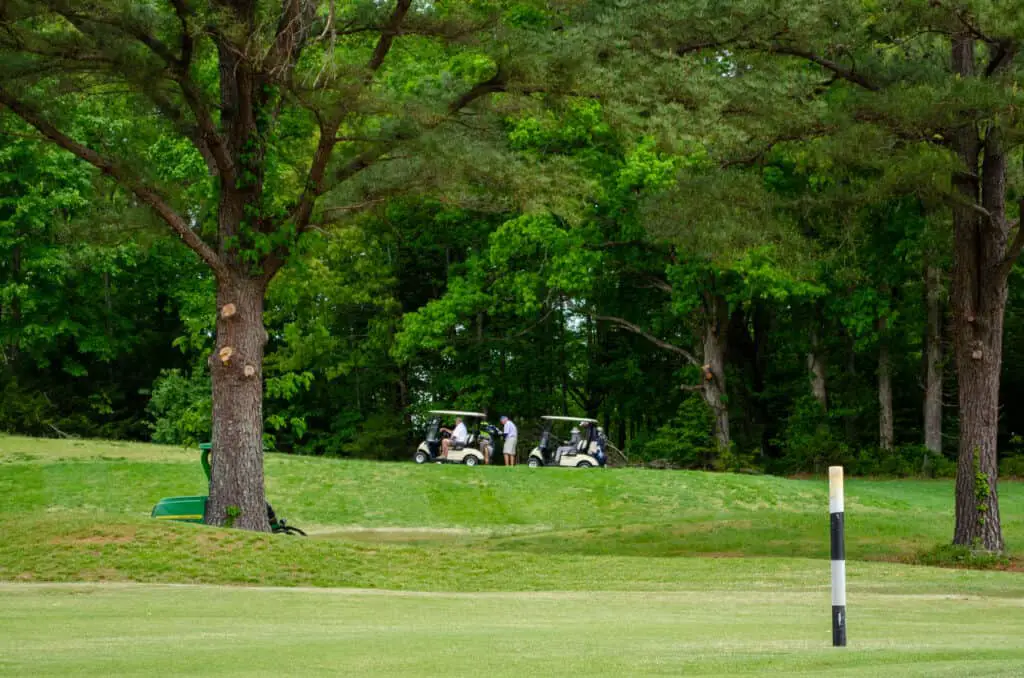
Do not stand further from the ball with your arms separated from your body, as it would be disastrous.
Golf Club Grip
A too strong grip pressure causes a stoppage of the body at the time of the strike. The clubface indeed arrives very closed and oriented to the left at impact while the body is blocked (very interior-exterior path).
With a very strong grip, your body hangs, and the hands turn to compensate for fear of going to the right, and the consequence is an embarrassing shot.
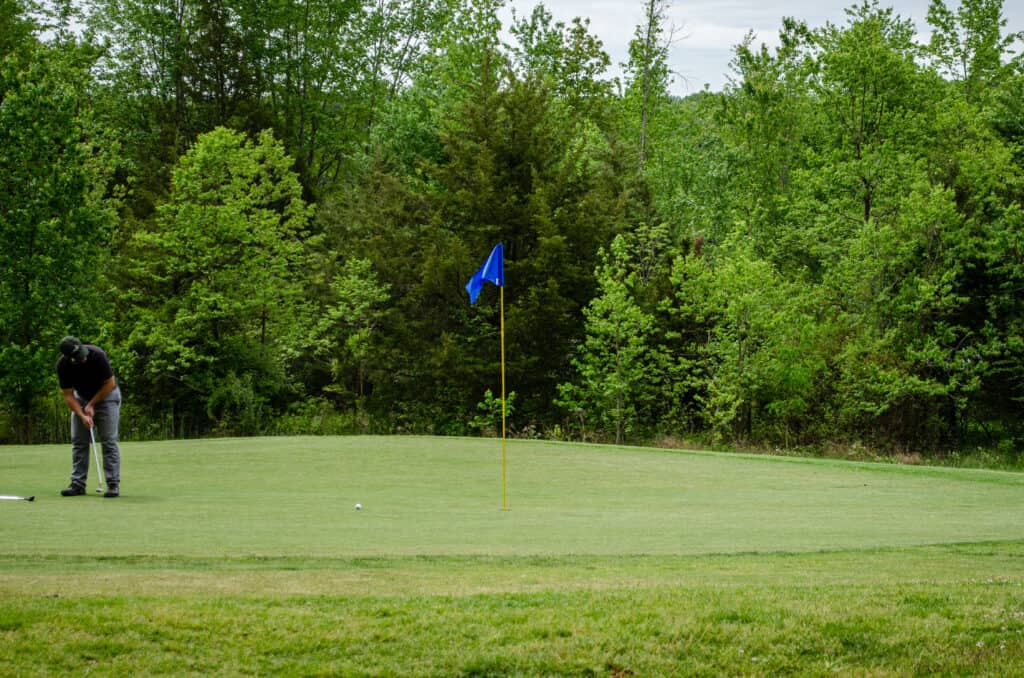
You can avoid this by changing your grip pressure as a priority to not compensate. You must correct the causes rather than the consequences.
Maintaining good posture at the address until the moment of impact is imperative. The more you try to go under the ball to make it rise, the more you will beat it—golf ball attacks from top to bottom.
To avoid topping the ball, it should be back and not forward. You have to take it on the way down, not on the way up
After shank
The biggest challenge remains the blow that follows a golf shank since the evidence shows that the shank is the most difficult stroke to forget for 42% of golfers surveyed.
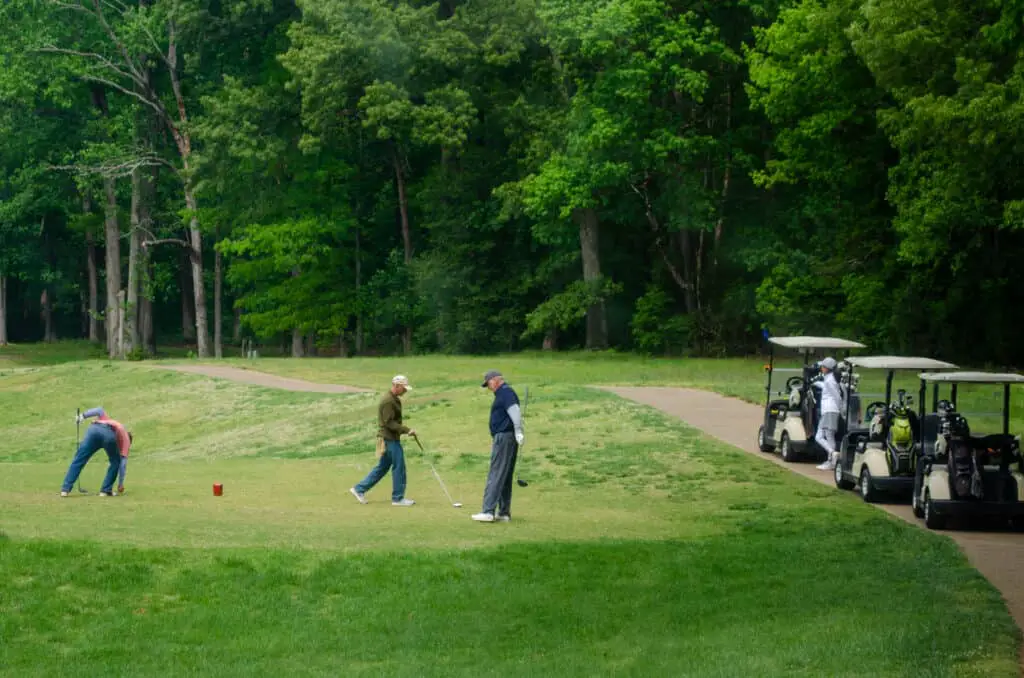
Mentally, it requires a lot of motivation. You need to focus on the quality of your position at the start, your swing speed and good velocity on the descent without hesitation.
If possible, you can also perform several swings on the driving range as an exercise with a club cover placed just beyond the ball. Most golfers find that this will help avoid the shanked shot.
Exercise to Practice the Right Posture to Avoid Shanks
A great drill to train your body is to open the feet and pelvis at the address facing left of the target line—practice swinging parallel to the feet and pelvis.
Carefully rotate the pelvis, allowing arms, hands and club to pass while keeping the shaft and clubhead out of the body.
The more the body turns (hips-left shoulder) during the strike, the less you will need your hands to compensate.
The objective: the left hip and the left shoulder disappear quickly at the beginning of the return all while maintaining proper spine angle.
We hope the this article is helpful for you in the journey to eliminate shanks from your golf game.
- Should Tee Boxes Be Level? - January 23, 2024
- 3 Hybrid Distance - November 15, 2023
- Innovations in Golf Mobility: An In-depth Review of Top Golf Scooters - October 12, 2023
